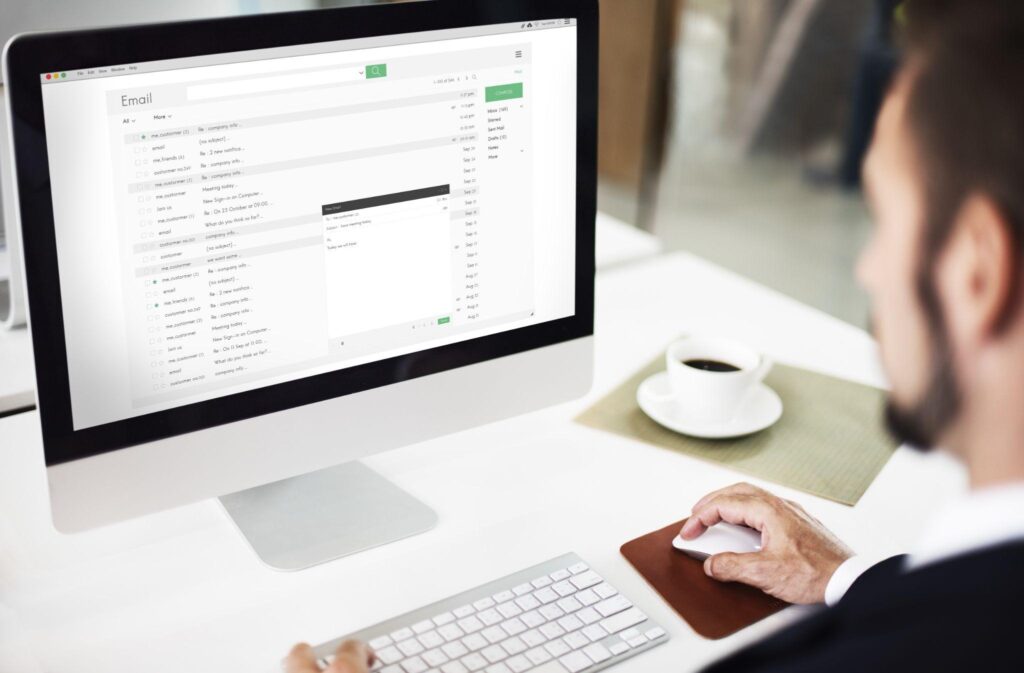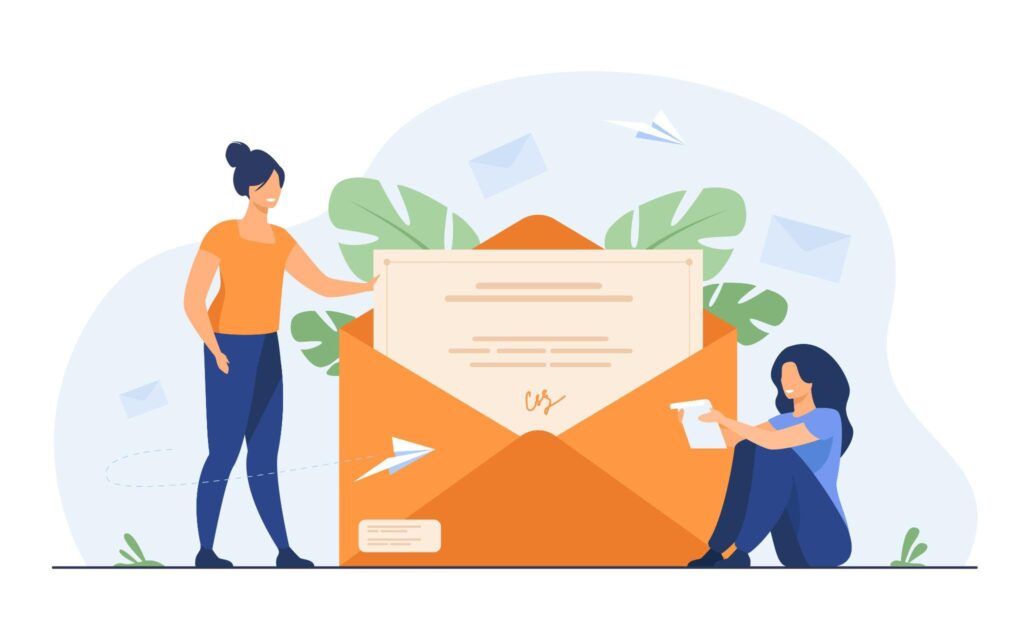Email marketing is a powerful tool that businesses can use to connect with their target audience and promote their products or services.
It is an effective way to generate leads and convert them into paying customers. However, creating an effective email marketing campaign can be a bit of a challenge, especially when it comes to lead generation.
In this article, we will be discussing the ultimate guide to email marketing lead generation and how to turn subscribers into customers. You’ll learn the best practices and strategies that can help turn your subscribers into loyal customers.
From crafting compelling subject lines to segmenting your email list, we’ll cover everything you need to know to create an email marketing campaign that delivers results.
1. Build a Targeted Email List

The first step in any email marketing campaign is to build a targeted email list. This means that you need to focus on gathering the contact information of individuals who are most likely to be interested in your products or services. There are several ways to do this, including:
Offering a Lead Magnet
A lead magnet is a powerful tool in the world of digital marketing. It’s essentially a free resource that you offer to potential customers in exchange for their contact information.
The idea behind this is that by providing something of value to your target audience, you can attract and capture their attention and then use their contact information to nurture a relationship with them and ultimately convert them into paying customers.
There are many different types of lead magnets that businesses can offer. Some examples include:
Ebooks: These are digital books that provide in-depth information on a specific topic. They’re a great way to provide value to your target audience while also collecting their contact information.
Guides: Similar to ebooks, guides are a great way to provide valuable information to your target audience. They can be in the form of a PDF, a video, or even a series of blog posts.
Free trials: This is a great lead magnet for businesses that offer a service. By offering a free trial, you give potential customers the opportunity to test out your service and see the value it provides before committing to a purchase.
Using opt-in forms: Opt-in forms are an essential part of any digital marketing strategy. They allow you to gather important contact information from website visitors, such as their email addresses, name, and phone number.
This information can then be used to nurture a relationship with those visitors, ultimately leading to more conversions and sales.
Imagine you’re a business that sells healthy meal plans. You could offer a free 7-day meal plan to website visitors in exchange for their email addresses. To collect that information, you would use an opt-in form. This form could be placed on your website’s homepage, on your blog, or even on your social media pages.
When a visitor sees the offer of a free meal plan, they’ll likely be interested in getting their hands on it. To do so, they’ll need to fill out the opt-in form and provide their email address. Once they’ve done that, you can start sending them emails with more information about your meal plans, recipe ideas, and even exclusive discounts.
Running a contest or giveaway: Running a contest or giveaway is an exciting and effective way to grow your email list and engage with your audience.
Contests and giveaways can be a great way to generate buzz, create brand awareness, and increase engagement. They are also a great way to incentivize people to sign up for your email list.
Imagine you’re a technology company, and you want to increase your email list; you could run a giveaway where you give away a new smartphone to one lucky winner. To enter the giveaway, participants would need to provide their email addresses. This way, you’re not only growing your email list, but you’re also creating a sense of excitement and anticipation among your audience, and also you can use this email list to let them know about your latest products or upcoming events.
Purchasing email lists: Purchasing an email list refers to buying a list of contact information from a third-party provider. This practice is not recommended because it can lead to a number of negative consequences.
The first issue is that purchasing an email list is not a targeted approach. The people on the list may not have any interest in your business, products or services, leading to a high unsubscription rate. This means that a significant number of people will opt out of your emails, which can harm your sender’s reputation and make it harder for your future emails to reach the inbox.
Another issue is that when people receive emails from an unknown sender, they may mark it as spam, which can also harm your sender’s reputation. And that can lead to a low email open rate, which means fewer people will engage with your emails.
2. Segment Your Email List
Segmenting your email list is like creating a VIP section in a nightclub. Your email list is like the club, and the different segments within it are like the VIP sections.
Just as a club has different sections for different types of people, your email list should be divided into smaller groups based on specific characteristics or behaviors.
For example, You are running an e-commerce store, and you have a segment of your email list that consists of customers who have made a purchase in the last 30 days.
You could send them an email with a special offer for repeat customers. This is a highly targeted and personalized email campaign that would be more likely to be opened and read by this segment of your list, and it would also increase the chances of conversion.
3. Create High-Quality Content
The content of your emails is just as important as the list itself. In order to generate leads, your emails must be high-quality and engaging. This means that you should focus on creating relevant, valuable, and actionable content that your subscribers will find useful.
Some Tips for Creating High-Quality Content
Using a personal tone: People are more likely to engage with an email that feels personal and relatable. Instead of writing in a formal tone, try to use a more conversational style that makes it feel like you’re talking directly to your subscribers. This will help to create a sense of connection and trust with your audience.
Providing valuable information: Your emails should provide your subscribers with valuable information that they can use. This could be tips and tricks, industry insights, or even exclusive promotions. By providing your subscribers with valuable information, you’re showing them that you’re invested in their success and that you want to help them.
Using visuals: Visuals such as images and videos can help make your emails more engaging. People are more likely to engage with emails that include visuals because they’re more interesting to look at. So, try to include relevant images and videos in your emails to make them more engaging.
Creating a sense of urgency: Use language and strategies to create a sense of urgency that will motivate people to take action. This could be through limited-time offers or creating a sense of scarcity. By creating a sense of urgency, you’re encouraging your subscribers to take action right away, which can help increase conversions.
4. Optimize Your Emails for Conversion

Once you have created high-quality content, it is important to optimize your emails for conversion. This means that you should focus on making it as easy as possible for your subscribers to take action.
Some Ways to Optimize your Emails for Conversion
Including a clear call-to-action: Make sure to include a clear and compelling call-to-action in your emails to guide your subscribers on what action you want them to take. For example, if you’re promoting a new product, your call-to-action could be the ‘Shop now’ or ‘Learn more’ button. It could also be ‘Sign up’ for a newsletter or webinar or ‘Download’ for a whitepaper or e-book.
Making it easy to click through: Your emails should be designed in a way that makes it easy for your subscribers to click through to your website or landing page.
Using landing pages: Landing pages are separate web pages that are designed specifically to convert visitors into leads.
5. Test and Analyze Your Emails
To improve your email marketing campaigns, it is crucial to evaluate their performance by testing and analyzing them. This will enable you to make the necessary adjustments. Some aspects to consider testing include:
Subject Lines

The subject line is the first thing people see when they receive an email, so it’s essential to make sure it’s attention-grabbing and relevant.
Some subject lines examples are:
- “Exclusive offer: 25% off for our loyal subscribers”
- “Last chance to save big on our [product/service]”
- “New product alert: [product name]”
- “Don’t miss out on our limited-time promotion”
- “Urgent: [Company/Brand] survey for a chance to win a prize”
Email Design
The design of your email can have a big impact on how well it performs. Try testing different layouts, colors, and images to see what resonates with your audience.
Timing
The timing of your emails can also play a role in their success. Test sending emails at different times of the day or week to see when your audience is most engaged.
A/B testing
A/B testing allows you to test different versions of your emails and compare their performance. This can be done with different subject lines, email designs, or even calls to action.
By using these tips, you can create effective email marketing campaigns that generate leads and convert them into customers.
Remember that email marketing is a continuous process, so always be testing and optimizing your campaigns to improve their performance.
FAQs
How can I measure the success of my email marketing lead-generation campaign?
Measuring the success of your email marketing lead generation campaign can be done by tracking metrics such as open rates, click-through rates, conversion rates, and unsubscribe rates.
How often should I send emails as part of my lead generation campaign?
The frequency of your emails will depend on your specific audience and goals. It’s recommended to start with a consistent schedule and then adjust as needed based on engagement and conversion rates.
Can I use automation for my email marketing lead-generation campaign?
Yes, you can use automation to streamline your lead generation campaign. Email marketing automation allows you to set up targeted and personalized email campaigns that are triggered by specific actions or behaviors of your subscribers.
In conclusion, Email marketing is a powerful tool for lead generation, but it’s essential to do it right. By building a targeted email list, segmenting it, creating high-quality content, optimizing your emails for conversion, and testing and analyzing your campaigns, you can turn your subscribers into customers. With a dedicated approach and patience, you can craft a winning email marketing strategy that delivers tangible results for your business.
